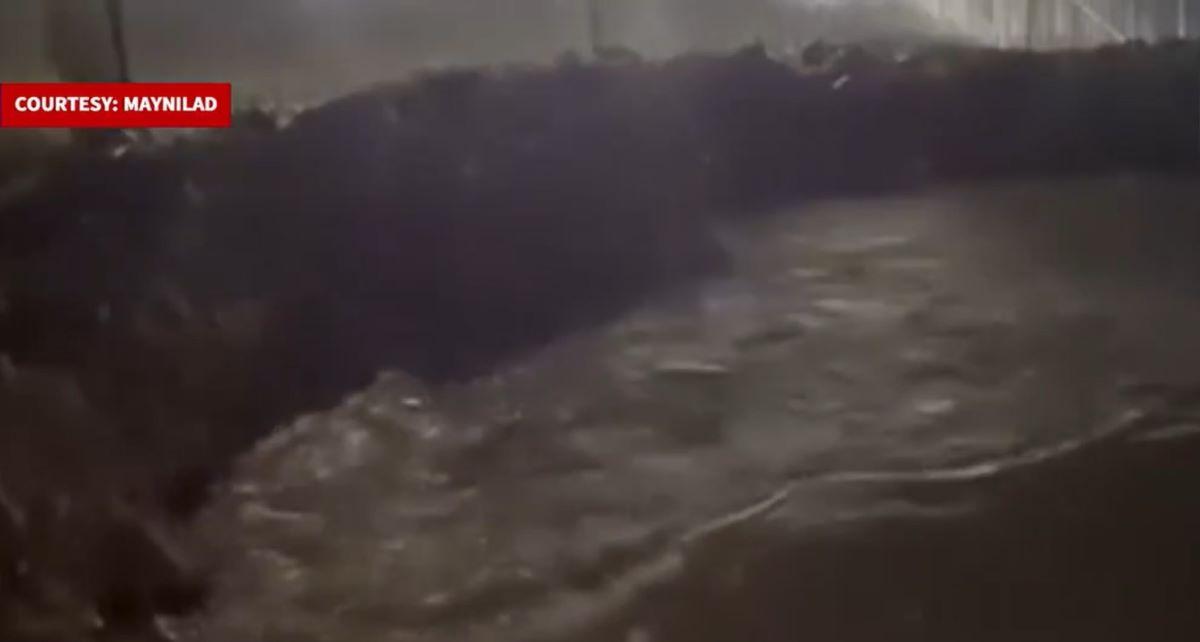Filtered by: Topstories
News
EcoWaste says public may pay for toxic revelry
(Updated 1:29 p.m) The smog created by firecrackers and fireworks during the New Year’s eve revelry may cause more Filipinos to develop respiratory problems in the next few days, an environmental group said Sunday. “We now have to pay the real price of our merrymaking in the form of aggravated respiratory ailments such as asthma and allergic rhinitis. The extra pollutants in the atmosphere have added another level of danger to the already-contaminated air that we breathe," EcoWaste Coalition president Roy Alvarez said on the group’s blog site. Alvarez said fine particles in the air can penetrate the upper respiratory tract and be deposited deep in a person’s lungs. Total suspended particulates now pollute the atmosphere following the firecrackers and other pyrotechnic devices used in the past few weeks, he added. The group said President Benigno Aquino III should lead a campaign against firecrackers the way he led and succeeded in trouncing the use of “wang-wang" sirens that even ordinary people employ to get ahead in traffic. Most susceptible to risks associated with these minute pollutants are children, elderly, and people with heart and lung diseases, EcoWaste said. Total suspended particulates (TSP) — or total dust — now pollute the atmosphere following the firecrackers and other pyrotechnic devices used in the past few weeks, Alvarez said. The Department of Environment and Natural Resources said that the TSP in Manila increased to 163 micrograms per normal cubic meter (ug/ncm) last year from 134 ug/ncm in 2009. The normal TSP standard for a year is 90 ug/ncm, according to the World Health Organization. High dust levels in Metro Manila The Environmental Management Bureau has noted higher TSP levels in most of the air sampling areas in the metropolis, EcoWaste cited. For instance, the Taft Avenue-EDSA area registered the highest level of TSP at 369 ug/ncm on Dec. 28, 2009, and 396 ug/ncm on Jan. 4, 2010. “The TSP levels in Metro air would have been much worse during and immediately after the New Year’s eve itself with the massive lighting of firecrackers and fireworks," Alvarez said. EcoWaste cited a 2009 World Bank study that says, “over 1.5 million Filipinos of varying ages afflicted with respiratory illnesses annually are due to air pollution in urban areas, notably Metro Manila." “The aggregate annual cost of air pollution related illnesses is close to P1 billion, with productivity losses accounting for P502 million, personal costs for diseases treatment accounting for P360 million, and government health care subsidies accounting for P88 million," EcoWaste said. Aileen Lucero, EcoWaste project coordinator, said the New Year’s eve revelry “encourages consumers to put the lives and health of many Filipinos at risk for a few fleeting moments of fun." “The question we should be asking is: Are the lives of our families and friends worth the tradeoff [with] celebrating on New Year’s Eve?" she said. 10 things to do According to EcoWaste, 10 things can encourage a safer and cleaner celebration of the New Year:
- For President Aquino to champion the campaign against firecrackers in the same way he led and succeeded in eliminating “wang-wang" on the streets.
- For government to wage a holistic campaign for a safe and climate-friendly New Year revelry that will educate the public about the health, safety, and financial threats of toxic noisemakers to humans, animals, and whole ecosystems.
- For law enforcers to impose a blanket ban on the sale of all types of firecrackers to children.
- For health and police agencies to enforce a common revised list of banned firecrackers like the notorious piccolo and “explosives" such as Bin Laden, King Kong, Goodbye Philippines, Goodbye Earth, and Goodbye Universe.
- For customs and police authorities to enforce the ban on imported firecrackers and fireworks under Sec. 6 of Republic Act 7183 or “An Act Regulating the Sale, Manufacture, Distribution and Use of Firecracker and Other Pyrotechnic Devices."
- For makers of fireworks and firecrackers to disclose the chemical contents of their products and the pollution such things may cause, and imposing a “no data, no market" policy.
- For legislative and judicial authorities to classify indiscriminate firing of firearms as a heinous crime.
- For environmental regulators to measure ambient air quality during and after the New Year celebrations and generate more solid data to guide policymakers and the public.
- For authorities to ensure no public funds are spent on firecrackers and other pyrotechnics, including aerial fireworks that pollute the atmosphere and violate the people’s right to breathe clean air.
- For authorities to provide with financial incentives barangays promoting community celebrations sans firecrackers and fireworks, and spend the money instead on communal “salo-salo" and on “media noche" packs to indigent families.
Find out your candidates' profile
Find the latest news
Find out individual candidate platforms
Choose your candidates and print out your selection.
Voter Demographics
More Videos
Most Popular

Ateneo School of Gov’t, student councils join call for VP Sara impeachment trial
_2023_11_22_09_09_53.png)
BTS officially announces upcoming military discharge of RM, Jimin, V, Jungkook

Mika-Brent, AZ-River, Charlie-Esnyr: Final duos in 'Pinoy Big Brother' are completed






